NEVER TO BE FORGOTTEN:
Bison's Historical Significance
 Section
SectionBowed heads at the table. It’s how people through the ages have shown thankfulness to God
for the blessing of food. On the Great Plains, Indians offered thanks to the spirits for the bison,
the creature on whom their lives depended, from food to the hide, hair, hooves, bones –
its entire body was a gift. Their animistic religion, however, differed from Christianity, for they
believed in the connectedness of life, that the animate and inanimate are one, whether trees,
birds, bison and fish, or rocks, caves and lakes.
After a hunt, the Plains Indians held ceremonies expressing gratitude for the bison that were
killed. They had over 150 uses for the different parts of the animal. As a food source, everything
edible was consumed. The meat was roasted, boiled, smoked, broiled or dried. The entrails
and fat were favorites of many. To dry the meat for storage, the flesh was cut into strips
and hung to dry around a fire or laid out in the hot sun until it was dry.

Arapaho camp with buffalo meat drying near Fort Dodge, Kansas, 1870 (Wikimedia Commons)
To make pemmican – what we might call bison “power bars” – the brittle strips were ground
into a powder and mixed with hot tallow or fat. Dried fruits like chokecherries and blueberries
were often added, then the mixture was cooled and stored. The Sioux formed pemmican,
which they called “wasna,” into balls. With the mix of protein, carbohydrates and fats, this
food lasted for years, providing rich and tasty nutrition for native people. Today it’s a popular survival food for hunters and a good snack for athletes, explorers and people observing a
keto diet. It’s easy to make pemmican yourself.
Some tribes ate parts of the bison and internal organs raw, and would even drink the blood if
water wasn’t available. The Sioux ate dried bison instead of bread. They made roasted bison
hump (the shoulder) soup with hooves, tails and pemmican. The Plains Indians considered as
delicacies boiled bison brains, heart, shoulder, tongue and gristle from snouts. “On occasion,
the older people would sometimes cut out the teats of a milking bison and drink the milk,” as
reported on the website Traditional Animal Foods.
The bones, once cleaned, were fashioned into a variety of objects, including arrowheads,
awls, scrapers, pipes, needles, hoes, fertilizer, war clubs and dolls. Tails made handy fly swatters.
Sinews were used for thread and bowstrings. The paunch and bladder were used for
cooking utensils. Cartilage from the head was boiled to make glue. Hooves were crafted to
make ladles and spoons. Horns were used for headdresses. Hair was woven to make ropes or
used to stuff pillows. The skin of the tongue with its rough texture was made into a comb.
Teeth were worn as ornaments and necklaces. Dried bison dung was good fuel for cooking
and heating as it burned intensely with very little smoke and was odorless..

Winters on the Northern Plains were very cold as now, and bison hides with their inner fur provided exceptional warmth. Hides were used to make tipis, drums, bedding, moccasins and clothing. They were used for ceremonial purposes, too, such as the Green Corn ceremony and the Sun Dance. Tribal leaders wore robes painted to illustrate a warrior’s heroism or to depict important events in the tribe’s history. Those Indians suffering from illness were covered with hides painted with symbols believed to promote healing. During childbirth, women sometimes wore painted hides thought to help ensure a healthy delivery.
The Plains people’s reliance on the bison and their profound appreciation for it was poignantly
described in 1865 by Chief Kicking Bear of the Kiowas:
"The buffalo is our money. It is our only resource with which to buy what we need and do not
receive from the government. The robes we can prepare and trade. We love them just as the
white man does his money. Just as it makes a white man's heart feel to have his money carried
away, so it makes us feel to see others killing and stealing our cattle given to us by the
Great Father above to provide us meat to eat and means to get things to wear."

Sundance, Shoshone Indians
(National Archives, 1925 photo)

Bison and Birds Original artwork by artist Charles Wilson generously gifted to Benjamin Lee Bison
We are happy for you to use the content on our historical pages if you will reference the source, www.BenjaminLeeBison.com and send an email to explain your intended use to Jessi at jessi@BenjaminLeeBison.com
Sources
Harriet V. Kuhnlein and Murray M. Humphries, “Bison,” Traditional Animal Foods of Indigenous Peoples
of Northern North America. htty://traditionalanimalfoods. org
Cynthia Kay Rhodes, Between Two Worlds: The Legend of Quanah Parker, 2009, Google
Want to learn more about the history of bison in North America?
Join our newsletter for articles, facts and news on the American bison



